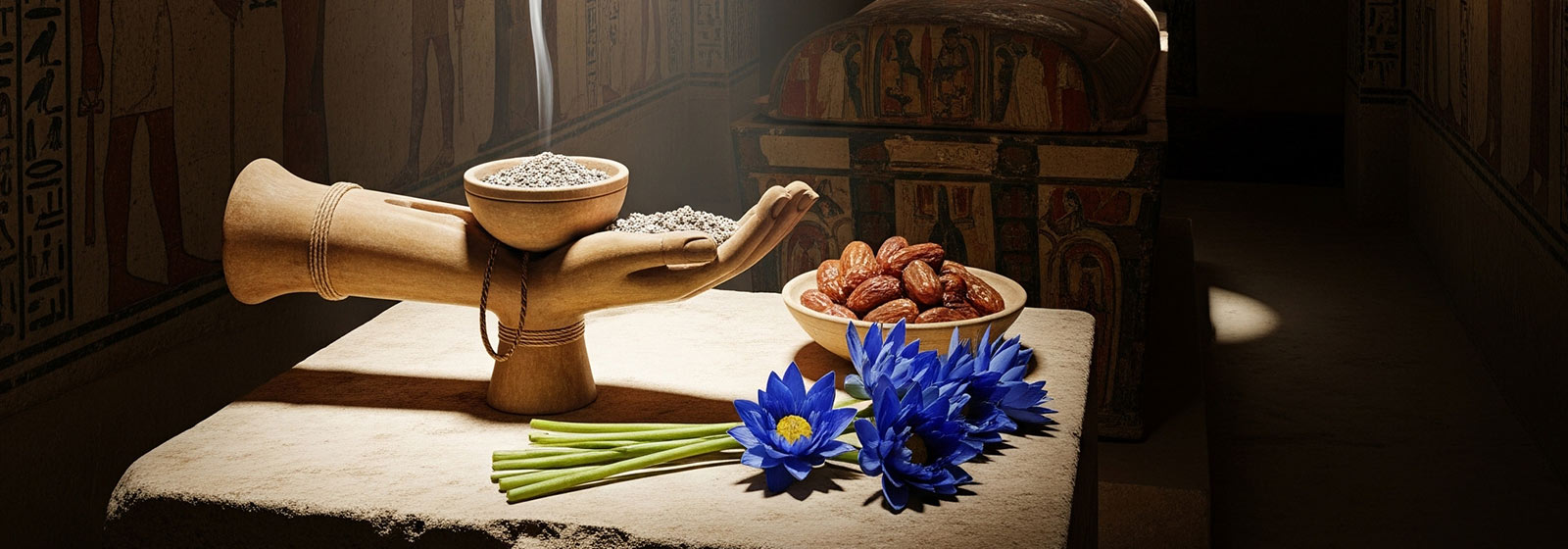
The simple act of lighting an incense stick can transform a space, filling it with evocative scents that calm the mind and soothe the spirit. But this small stick or cone carries the weight of millennia of history. From sacred rituals in ancient temples to the calming backdrop of a modern yoga studio, aromatic smoke has been a constant companion to humanity. Let's journey back in time and trace the fragrant history of incense.
Ancient Origins: Gods, Perfumes, and Pharaohs
The story of incense begins in the ancient world, where the burning of aromatic resins and woods was a practice steeped in both spirituality and practicality. The earliest recorded use dates back to the ancient Egyptians, as early as the Fifth Dynasty (c. 2494 to 2345 BC). They used incense extensively in religious ceremonies to honor the gods, believing the rising smoke carried their prayers to the heavens. Resins like frankincense and myrrh were considered precious commodities, and expeditions to the Land of Punt were launched to acquire them. Beyond the temple, incense was used to fumigate homes and even as a primitive form of perfume.
Simultaneously, in ancient Mesopotamia and the Indus Valley, similar practices were taking shape. The Babylonians burned incense during their elaborate rituals, and it's believed that the fabled Hanging Gardens were as much a feast for the nose as for the eyes.
The Fragrant Routes: Spreading Smoke Across the Globe
The demand for aromatic resins created some of the world's earliest and most important trade routes. The "Incense Route," a network of land and sea paths, connected the Mediterranean with the sources of frankincense and myrrh in Southern Arabia. This trade brought immense wealth to the kingdoms along the route and helped spread the culture of incense across the Roman Empire, Persia, and beyond.
In the East, the Silk Road was instrumental in carrying not just silk, but also spices, herbs, and aromatics. As Buddhism spread from India to China, Tibet, and Japan, it carried with it the practice of using incense as an offering and an aid to meditation. Different cultures developed their own unique styles and scents, from the sandalwood-heavy blends of India to the subtle, refined fragrances of Japan's Kōdō (the "Way of Incense"), an elegant ceremony dedicated to appreciating fragrance.
A Constant in Faith and Ritual
For thousands of years, incense has been a central element in spiritual practices across the globe.
In Christianity:
The use of incense, particularly frankincense, is symbolic of the prayers of the faithful ascending to God. It was one of the three gifts brought to the infant Jesus by the Magi.
In Buddhist temples:
Burning incense is a mindful offering, meant to purify a space and create a serene atmosphere for meditation and prayer.
In Hinduism:
Incense (agarbatti) is an integral part of puja (worship), used to create a pleasing environment and show reverence to deities.
From Sacred to Secular: Incense in the Modern World
While its spiritual significance remains, the use of incense has also expanded into the secular realm. In the 20th century, it became associated with counter-culture movements and a growing interest in Eastern philosophy.
Today, people burn incense for a multitude of reasons: to relax and unwind after a long day, to enhance focus during meditation or creative work, to combat household odors, or simply to enjoy a beautiful fragrance. The variety available is staggering—from traditional scents like sandalwood and patchouli to modern blends of fruits, florals, and spices.
The delicate curl of aromatic smoke that rises from a simple stick is a thread connecting us to our most ancient ancestors. It’s a reminder that the human desire for beauty, spirituality, and a moment of peace is a story as old as time itself.
 Login to Leave the First Comment
Login to Leave the First CommentMore articles you may enjoy:






 Menu
Menu
